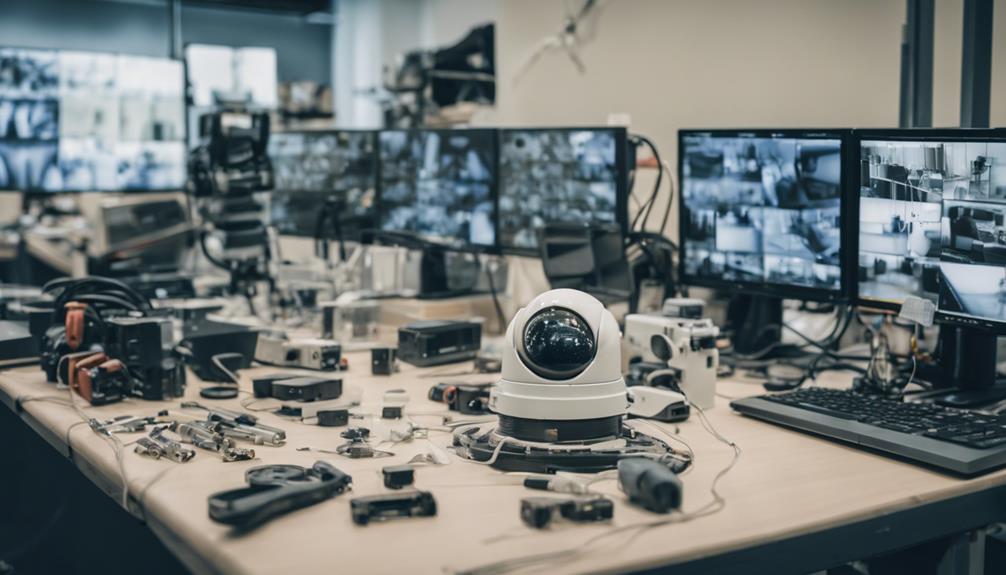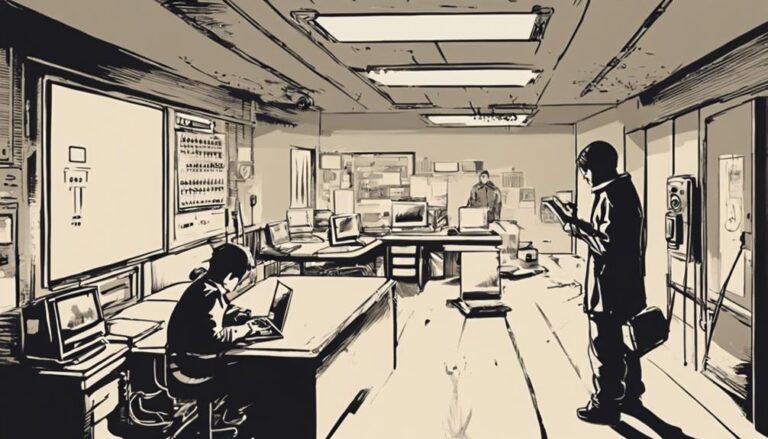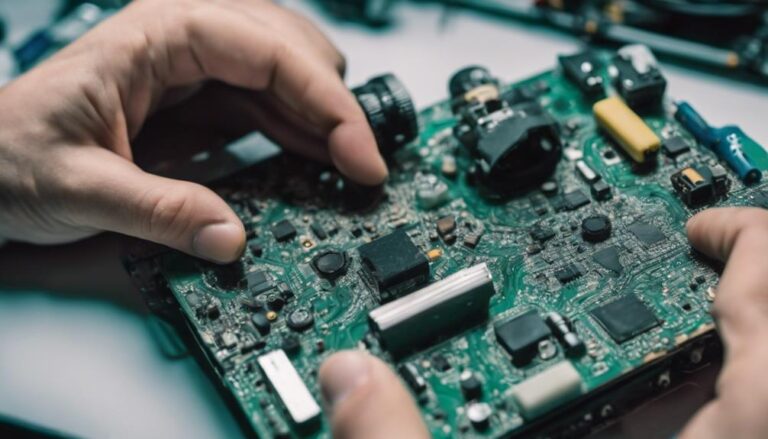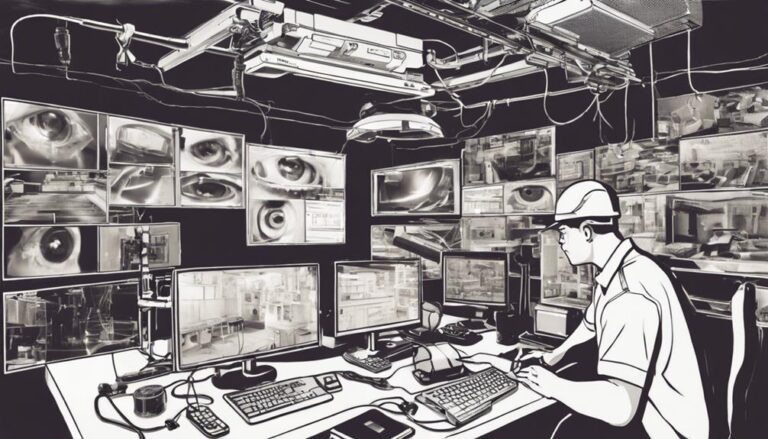Common CCTV problems include blurry images, connectivity issues, night vision failures, recording interruptions, and power supply failures. For blurry footage, clean lenses and adjust camera angles. Connectivity can improve with strategic placement and upgraded routers. Enhance night vision clarity through additional lighting and better frame rates. If your system isn’t recording, check settings, storage capacity, and keep firmware updated. To avoid power issues, use surge protectors and monitor connections regularly. Addressing these concerns promptly guarantees a reliable surveillance system. Further insights can enhance your troubleshooting skills and system performance effectively.
Blurry or Distorted Images
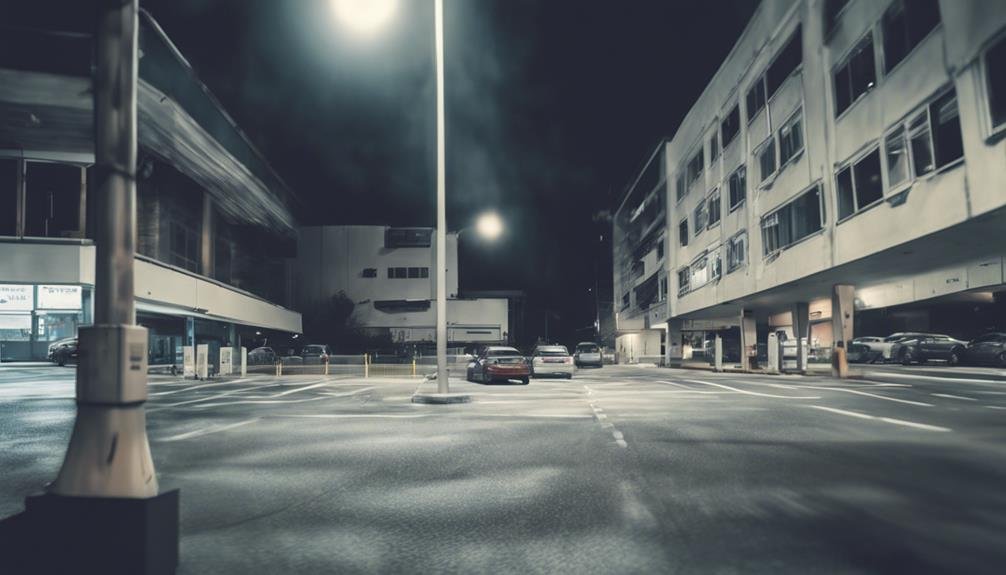
Blurry or distorted images can greatly hinder the effectiveness of your CCTV system, ultimately compromising security. When you rely on surveillance cameras for safety, it’s vital to guarantee that your footage is clear and detailed. One common issue stems from dirty lenses. Dust, fingerprints, or moisture can obstruct the camera‘s view, leading to unclear images. Regular lens cleaning is essential; using a microfiber cloth and appropriate cleaning solution can make a noteworthy difference.
Another factor to take into account is camera positioning. If your cameras are not properly aligned or are facing directly into sunlight, you may encounter glare or distortion. Adjusting the angle or height of the camera can optimize image quality. Confirm that the camera’s field of view captures the intended area without obstructions such as trees or buildings.
It’s also important to assess the resolution settings of your CCTV system. Higher resolution provides clearer images, reducing the likelihood of distortion. By addressing these issues—lens cleaning and camera positioning—you can greatly enhance the clarity of your surveillance footage, thereby guaranteeing that your security measures remain robust and effective.
Connectivity Issues
Experiencing connectivity issues can greatly disrupt the functionality of your CCTV system, leading to gaps in surveillance coverage. These problems often stem from network interference, which can arise from various sources, including other electronic devices, physical obstructions, or even environmental factors. To maintain ideal performance, it’s essential to assess the wireless environment surrounding your cameras.
First, verify that your camera placement is strategic. Positioning cameras too close to walls, large metal objects, or other electronics can obstruct signals, causing intermittent connectivity. Ideally, cameras should be placed in open areas where the signal can travel freely.
Next, consider your network setup. If you’re using Wi-Fi, confirm your router is capable of handling the bandwidth required for multiple cameras. Upgrading to a dual-band router or using a wired connection can notably enhance stability.
Lastly, regularly monitor your network for any sources of interference. Tools like Wi-Fi analyzers can help identify congested channels or devices that could disrupt your camera’s connection. By addressing these connectivity issues proactively, you’ll guarantee a more reliable surveillance system that keeps you informed and secure.
Night Vision Problems

How well does your CCTV system perform in low-light conditions? Night vision problems can greatly impact your security efforts, especially when you’re relying on your system during twilight hours. Common issues include infrared glare and insufficient ambient light, which can obscure vital details in your footage.
Here’s a breakdown of these problems and their solutions:
| Problem | Description | Solution |
|---|---|---|
| Infrared Glare | Overexposure from infrared LEDs | Adjust the angle of the camera |
| Low Ambient Light | Inadequate illumination for clarity | Install additional lighting |
| Motion Blur | Movement detected in low light | Use a higher frame rate setting |
| Color Distortion | Incorrect color representation | Opt for color night vision cameras |
To guarantee your CCTV system provides clear images at night, you must address these issues. Consider the environment where your camera is installed and optimize the setup for better performance. By tackling infrared glare and enhancing ambient light, you can improve the clarity of your night surveillance, giving you the freedom to monitor your property effectively.
System Not Recording
A malfunctioning CCTV system can leave you vulnerable, especially if it’s not recording when it should be. One of the primary causes of this issue can be traced back to incorrect camera settings. It’s essential to verify that your cameras are configured for continuous recording or motion detection, depending on your security needs. Check the settings in your system’s software interface to confirm that recording is enabled.
Another common culprit is insufficient storage capacity. If your hard drive is full, the system may stop recording automatically. Regularly monitor your storage levels and consider upgrading to a larger capacity drive or implementing a loop recording feature, which overwrites old footage to make space for new recordings.
Additionally, confirm that the camera firmware and software are up to date, as outdated versions can lead to functionality issues. Taking these steps will help you maintain a reliable CCTV system that operates as intended, safeguarding your environment and providing you with the freedom to feel secure. Regular checks and adjustments can prevent potential lapses in security, allowing you to focus on what truly matters.
Power Supply Failures
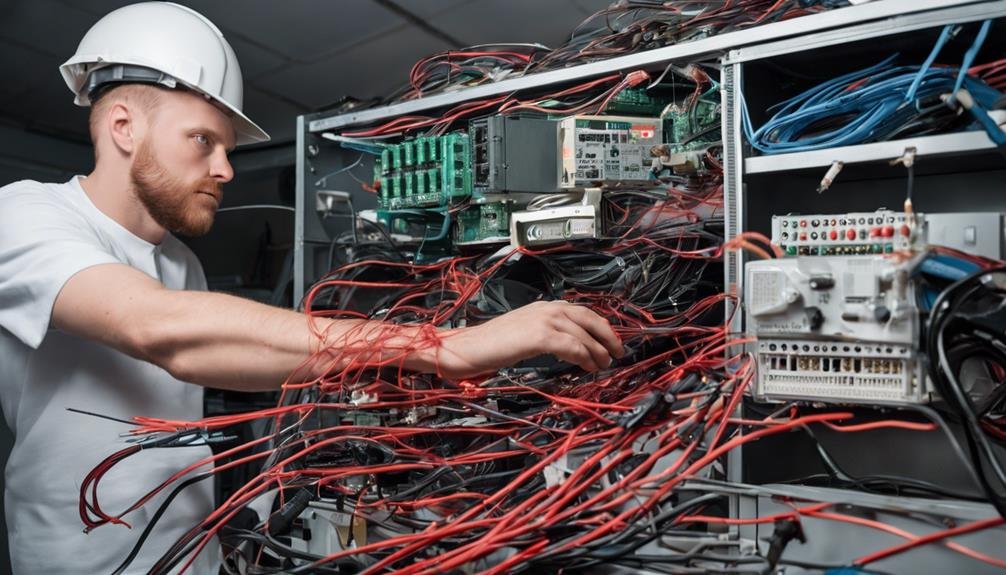
Power supply failures can critically impact the functionality of your CCTV system, leading to downtime and potential security breaches. One of the most common causes of such failures is voltage fluctuations, which can damage the power supply unit and result in inconsistent performance of your cameras. To mitigate these risks, make certain you’re using a reliable power supply that can handle the load of your entire system.
Effective cable management is essential; poorly organized cables can lead to wear and tear, increasing the likelihood of power failures. Make sure your cables are secured, free from knots or sharp bends, and properly rated for the voltage they carry. Additionally, consider using surge protectors or uninterruptible power supplies (UPS) to safeguard against sudden spikes or drops in voltage.
Regularly inspect your power supply connections and cables for any signs of damage or wear. If you notice any irregularities, replace components promptly. By maintaining a robust power supply system and practicing good cable management, you can greatly reduce the risk of power supply failures, making certain your CCTV system operates smoothly and effectively when you need it most.
Frequently Asked Questions
How Can I Improve My Cctv’s Field of View?
To improve your CCTV’s field of view, consider adjusting camera placement for ideal angles and selecting a lens with a wider focal length. These changes enhance coverage, ensuring you don’t miss critical areas.
What Should I Do if My CCTV Is Stolen?
When your CCTV’s vanished, it’s like losing a guardian. First, report the theft for theft prevention. Then, contact your insurance for claims, ensuring you provide details to reclaim your security swiftly, restoring your peace of mind.
Can I Access My CCTV Remotely?
Yes, you can access your CCTV remotely. Confirm you’ve set up remote access features and followed proper security protocols to protect your footage. This allows you to monitor your property anytime, enhancing your freedom and security.
How Often Should I Maintain My CCTV System?
You should maintain your CCTV system regularly. Establish a CCTV cleaning schedule and conduct system performance checks every month to guarantee peak functionality, enhancing security while giving you peace of mind about your surveillance capabilities.
What Is the Lifespan of a Typical CCTV Camera?
Did you know most CCTV cameras last about 5 to 10 years? Camera durability varies by brand; consider replacement when performance declines, ensuring ideal security. Evaluate usage and environmental factors for timely replacement decisions.
